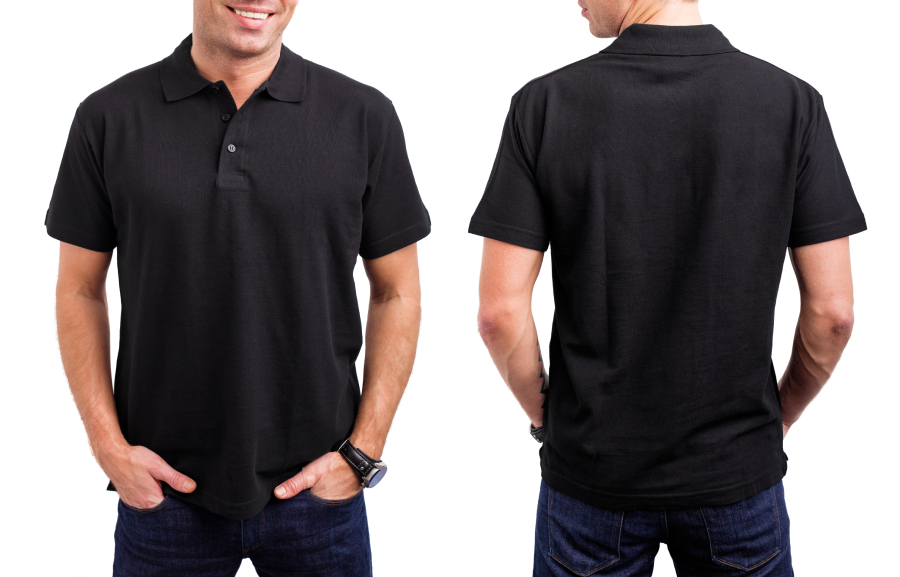
Take a look at your polo shirt. You’ll notice that their fabrics are a little bit different compared to your favourite t-shirt or button up. But why is that exactly? Turns out there’s a reason behind the materials used for this iconic garment. From sporting attire to leisurewear, the polo shirt has come a long way since it was first introduced. Today we’ll be discussing the significance of the fabrics that make up the polo shirt and find out why the choice of materials is very important.
The history of the polo shirt
Before we get started, let’s talk about the brief history of the polo shirt. In today’s world where athleisure is an ongoing trend, the polo shirt was actually conceived by a French tennis champion who wanted to design a garment that’s made specifically for sports. That man was none other than Jean René Lacoste himself, founder of the famous clothing company Lacoste. Nicknamed “The Crocodile” for his demeanour on the court, Jean René Lacoste embraced it and began his journey on creating tennis shirts with the crocodile logo embroidered on the garment.
The new tennis shirt had shorter sleeves to allow better movement during tennis games and a performance-oriented fabric was used (more on that later.) The simplified collar provided a look of formality while still feeling comfortable enough whilst playing. From there the classic tennis shirt transitioned into the polo shirt that we all love and wear today.
From tennis shirt to polo shirt
Renowned American designer Ralph Lauren burst onto the fashion scene and started producing leisurewear for rich individuals where the clothes would feel comfortable enough but still resemble their wealthy status. Lauren’s clothing line was called Polo because according to him, the garment looked the most elegant out of any sportswear at the time. By the late 70’s and early 80’s, the battle between Lacoste and Polo ensued when Lauren introduced his own version of the tennis shirt called “Polo”.
While most people associated Lacoste with higher quality, the name “polo shirt” ultimately surpassed the words “tennis shirt”.
How the fabrics are made
Because of the polo shirt’s sporty heritage, the fabrics used are mostly piqué or jersey. But before explaining the difference between the two fabrics, it’s important to know how these fabrics are made. For centuries, humans have used two methods for producing fabrics and those are weaving and knitting.
- Weaving is the process of interlacing long threads with each other to produce a fabric. The threads are placed in a horizontal and vertical manner (similar to a checkerboard) which holds them together. Some examples are denim and cotton which are woven to create the fabric. Weaving can either be simple or complex depending on the pattern of choice.
- Knitting, on the other hand, is a process where long needles are used to produce a fabric by creating stitches of a single yarn. The easiest way to identify if a garment is knitted is by looking at the material very closely. If you see a braided pattern right next to each other, chances are that garment is knitted.
What does this mean for polo shirts?
Polo shirts are usually made of knitted fabrics, but nowadays the garment can be made out of different fabrics such as silk and linen, with piqué and jersey being the most popular. The pique knit became the fabric of choice for Lacoste because of its breathability, flexibility, and durability (which helped greatly when playing sports). Upon close inspection, you’ll see a honeycomb or waffle-like pattern. Some polo shirts are double piquéd where two types of threads are combined. This is done to strengthen the fabric or to reduce costs by fusing together a lower quality material with a higher quality one.
Double piquéd polo shirts are also sometimes a design choice as combining textiles of varying colours can create a singular effect, enhancing its aesthetic appeal. Meanwhile, jersey polo shirts tend to be more performance-oriented and have a much softer texture than its piqué counterpart. Coco Chanel popularized the jersey fabric with their t-shirts and today the fabric has been used not just on polos, but other garments that are geared towards comfortability.
Which one is better? Jersey or piqué
At the end of the day, it’s all about personal preference. Go with what you think works best for you. For some people, polo shirts made of piqué look more high-end because of the stronger fabric and the sturdier collar. For others, jersey polos are a perfect choice because it’s more comfortable to wear. You can tell what material a polo is made just by touching it. For reference:
Jersey
- Feel soft and smooth to the touch
- Much cheaper than piqué
- Similar to a t-shirt
Piqué
- Feels thicker and heavier
- Texturised
- More breathable than jersey
- Honeycomb-like pattern upon close inspection
The polo shirt is a wardrobe staple and it’s crucial to select the right fabric to make the garment work for you. If you want to rock the athleisure trend, go with a polo shirt that provides increased comfort. If you want a polo shirt that looks sleek and elegant, go with one that has a strong collar and thicker fabric.
Bladon WA provides quality embroidered polo shirts in Perth, with a range of different styles available.

